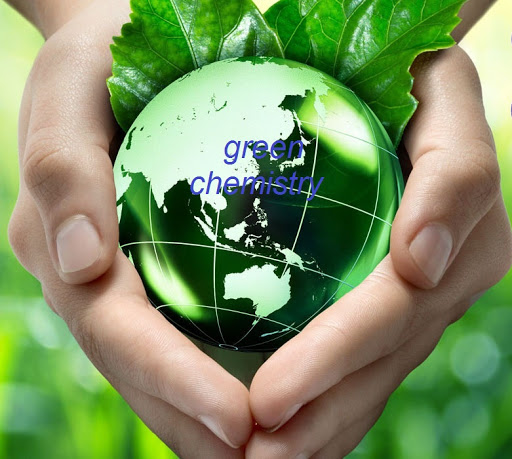(13th Congress) - In Viet Nam, the chemicals industry has taken major development steps and made several great achievements contributing to socio-economic development. However, the industry has been facing quite a few environmental and social challenges, which require it to find new pathways in development, production, and consumption to ensure sustainable development.
The United Nations Development Programme (UNDP) and Viet Nam Chemicals Agency of the Ministry of Industry and Trade (MOIT) co-organized a workshop entitled “Green Chemistry (GC) and Corporate Social Responsibility (CSR),” together with the Northern Viet Nam Paint and Printing Ink Club. The workshop aimed to raise awareness among stakeholders of and promote initiatives for CSR related to green chemistry (GC).
In Viet Nam, the chemicals industry has taken major development steps and made several great achievements contributing to socio-economic development. However, the industry has been facing quite a few environmental and social challenges, which require it to find new pathways in development, production, and consumption to ensure sustainable development.
Research shows that waste prevention is better and costs less than the treatment or disposal of waste after it has been created. Moreover, the more waste companies/businesses generate, the more costs they have to bear to deal with the environmental, social, and community health consequences.
 |
|
Photo: Internet
|
Using a GC approach in production and business also includes the fact that companies take on their social responsibility. CSR can be shown in these below categories: CSR for employees: Ensure a safe working environment, promote equity for women and men on all levels, promote working opportunities, and ensure privacy and safety for employees; CSR for consumers and customers: Provide high-quality products made from safe, non-toxic materials at a reasonable price, and conduct research and product development to commercialize innovative and useful products; CSR for suppliers (e.g., suppliers of recycled materials): Provide education for suppliers to create better and safer materials; CSR for the society: Implement programmes to develop the community and the region, focusing on where factories or suppliers (e.g. for pulp and paper) are located; CSR for the environment and health: Buy materials that are safe for the environment and society; avoid destroying biodiversity; ensure that the production process is unpolluted; ensure transparency when communicating environmental information; support environmentally friendly packaging; and develop products and procedures which are as environmentally friendly as possible, focusing on voluntary participation in the GC process and considering GC as part of the company’s CSR policy.
As chairperson of the workshop, Mr. Dao Xuan Lai, Head of the Climate Change and Environment Unit at UNDP Viet Nam, noted that “Green chemistry is an inevitable trend being promoted on a global scale, which helps us to avoid past mistakes such as the invention and use of DDT or the production and use of chemicals containing dioxin, mercury, CFCs, and the like.”
“As Viet Nam integrates quickly with the market, and with the regional and global economy via bilateral and multilateral free trade agreements, corporations and enterprises need to use the GC approach so that they and their products are better equipped when joining global supply chains. This benefits their long-term development and growth, and at the same time ensures sustainable development for Viet Nam and reduces the stress on our planet.”
Within the framework of the GC project, funded by UNDP and MOIT, initial solutions are being implemented with Vietnamese enterprises, including pilots with Plato Viet Nam JSC (electroplating) and Nishu Paint Viet Nam to reduce 3,472kg of persistent organic pollutants (POPs) and 923 metric tons of CO2 per year.
The workshop also aimed to collect comments on the needs of training for awareness raising and the application of green chemistry in paint and printing ink enterprises, as well as share some current situations, solutions, technology, and practices on waste treatment in small and medium-sized paint enterprises.
“For consumers to have access to green products, we need green materials, green manufacturing, and green construction. When, and only when, we are aware that green chemistry helps us to protect our health can we produce sustainable green products,” said Dang Anh Tu, CEO of Nishu Paint Viet Nam, one of the two enterprises performing the GC demonstration activities. Mr. Tu also shared that by applying green chemistry, Nishu has saved considerable costs: in particular, the highest monthly electricity bill that this enterprise has ever paid has not exceeded 50 million VND.
At the workshop, participants also shared the lessons they have learned on CSR in Viet Nam. According to Mr. Chu Van Nguyen, Vice President of the Vietnam Responsible Care Council (VRCC) of Chemical Enterprises, the implementation of CSR activities requires many efforts and the voluntary commitment of the leaders and employees of the company, as well as support from other enterprises in the industry. These voluntary CSR activities bring companies not only profits, but also trust from the market and the community.
The workshop welcomed more than 60 representatives from MOIT, the Viet Nam Chemicals Agency, UNDP, and paint and printing ink companies. This is one of the activities under the project “Application of green chemistry in Viet Nam to support green growth and reduction in the use and release of POPs/harmful chemicals”, supported by the Global Environment Facility (GEF) and UNDP. The main objective of the project is to create a favourable environment for introducing GC and GC application to the production industry in Viet Nam and reduce the use and release of chemicals controlled under the Stockholm and Minamata Conventions./.
Khac Kien